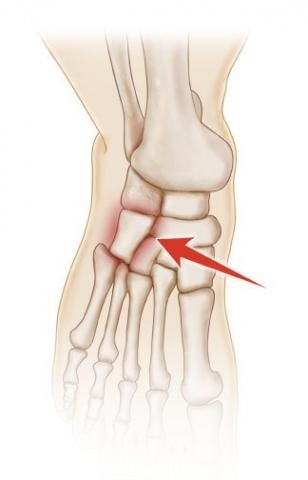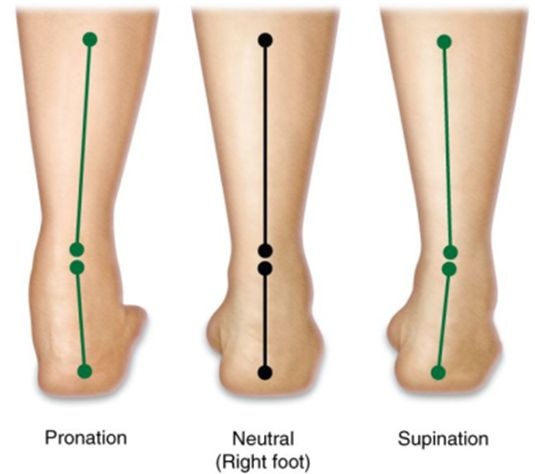Cuboid Syndrome
Text from:  Running Doc’s Guide to Healthy Running, Lewis G. Maharam, MD and www.footvitals.com
Running Doc’s Guide to Healthy Running, Lewis G. Maharam, MD and www.footvitals.com

Summary: Cuboid syndrome is a subluxation (partial dislocation) of the cuboid bone in the foot. The cuboid bone essentially moves out of place due to ligaments weakened from repetitive inversion (the foot repeatedly turning inward while running). The pain goes right up under the arch of the foot. It mimics plantar fasciitis but doesn’t go away with standard treatments. X-rays and MRI are usually not useful because they are normal. An examination with tenderness on this bone makes the diagnosis. Treatment is conservative, normally involving manipulation and then strapping with tape and/or employing an orthotic with a cuboid pad to hold the bone in place as the ligaments heal. Maximum downtime is six weeks.
The cuboid bone is located roughly at the midpoint of the outer side of the foot, and together with the other tarsal bones, it forms the arch of the foot. Other structures that may be involved in the injury include the calcaneocuboid joint and the surrounding ligaments.
 What Causes Cuboid Syndrome?
What Causes Cuboid Syndrome?
Typically it is athletes who develop cuboid syndrome, either after an injury, or as foot pain that appears without a noticeable injury. One study showed that as many as 80 percent of cuboid syndrome patients also have pronated feet (flat feet). Cuboid syndrome is often associated with repetitive movement of the foot, such that which occurs during running or dancing.
Signs and Symptoms of Cuboid Syndrome
Cuboid syndrome may cause pain in the lateral midfoot and under the arch of the foot, especially when walking. Patients may avoid putting weight on the affected foot.
Diagnosis and symptoms
Cuboid syndrome can be difficult to diagnose — and may be misdiagnosed — partially because it is not well understood, but also because there are often no physical findings on an x-ray, CT scan, or MRI.
- Pain: Palpating the area may be painful for the patient; some swelling can be present. Hopping on the affected foot may also be painful.
- Decrease in motion: Patients with cuboid syndrome may find inversion ankle movement to be painful.
- Uneven gait: Patients with cuboid syndrome may exhibit an antalgic gait — i.e., they seek to avoid putting weight on the affected foot. Pain during walking may occur as the foot pushes off the floor.
Treatment
Manipulation: Treatment of cuboid syndrome involves manipulation of the cuboid. After manipulating the cuboid bone, the clinician may further manage the patient’s discomfort with massage, cryotherapy (ice), non-thermal ultrasound, or electrical stimulation. In some cases, manipulation may need to repeated.
Padding and taping: Supporting the cuboid bone with padding or a wedge may help prevent recurrence. Taping may also be used to support and stabilize the bones of the midfoot.
Orthotics: Because many people who develop cuboid syndrome also overpronate, orthotics may be useful in preventing recurrence.
Exercise: The clinician treating the cuboid syndrome may prescribe some exercises that can help with symptoms and prevent the injury from occurring again. These exercises could include stretching the ankle up and down or in and out for a number of repetitions several times a day.
Train safely!


